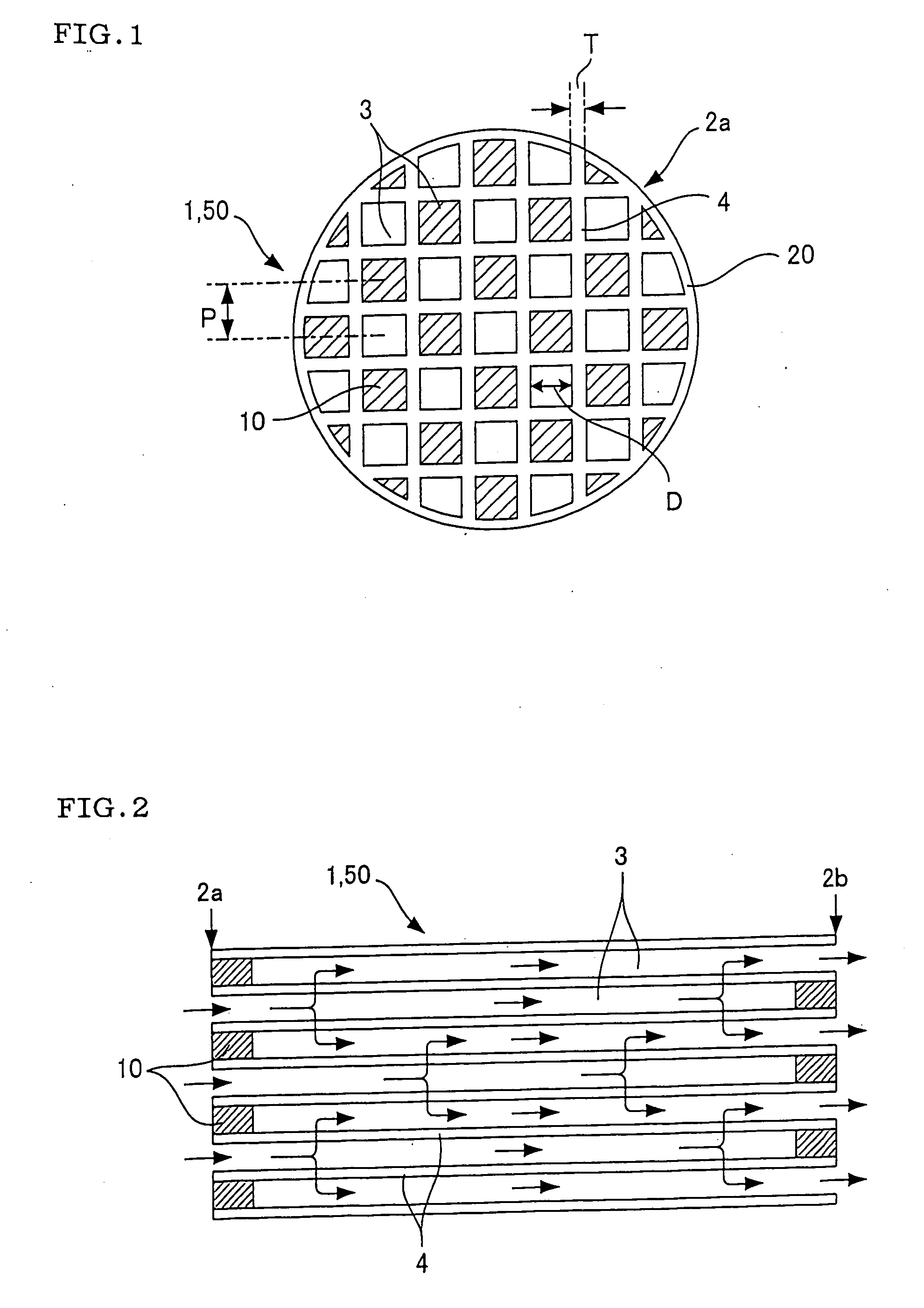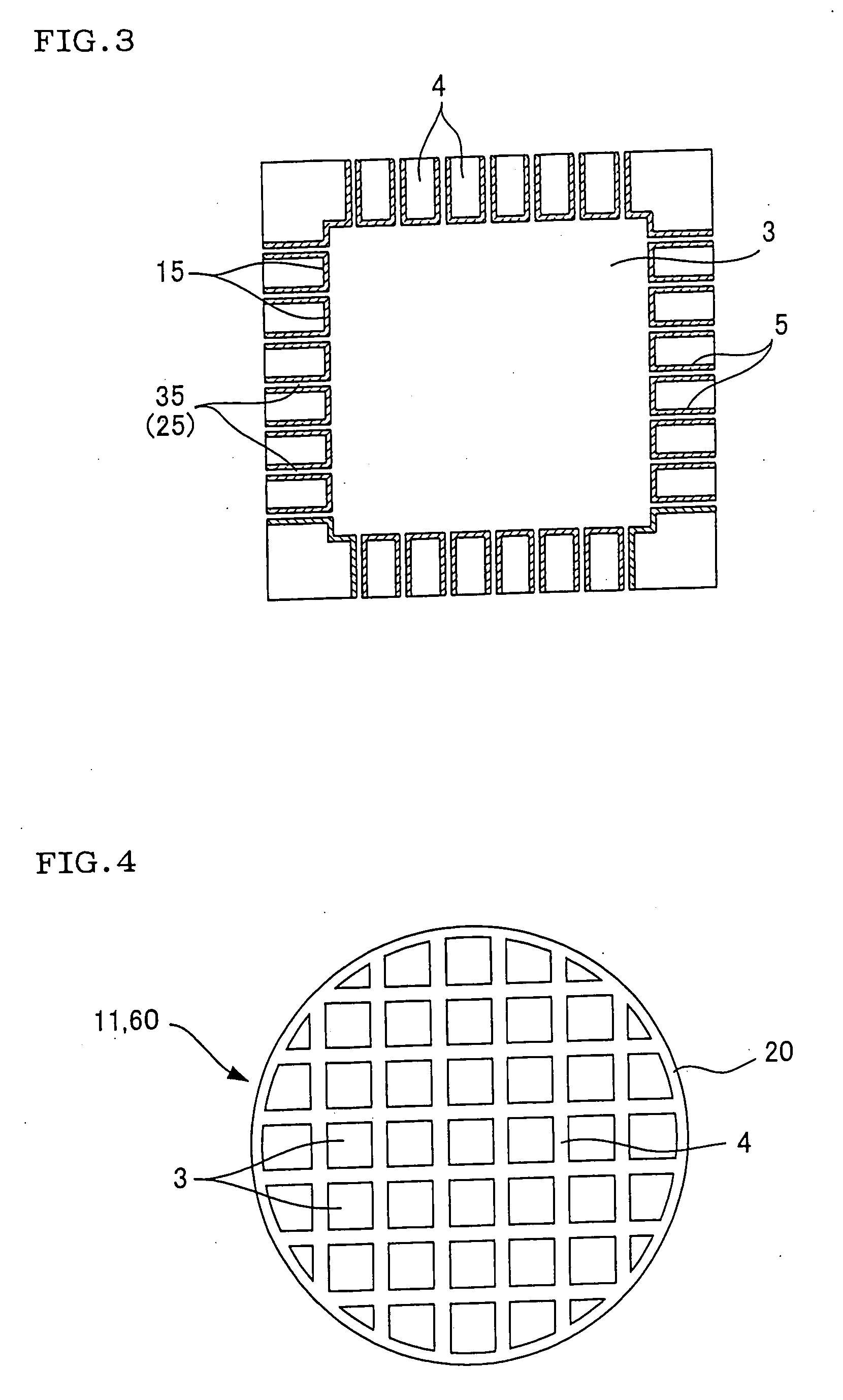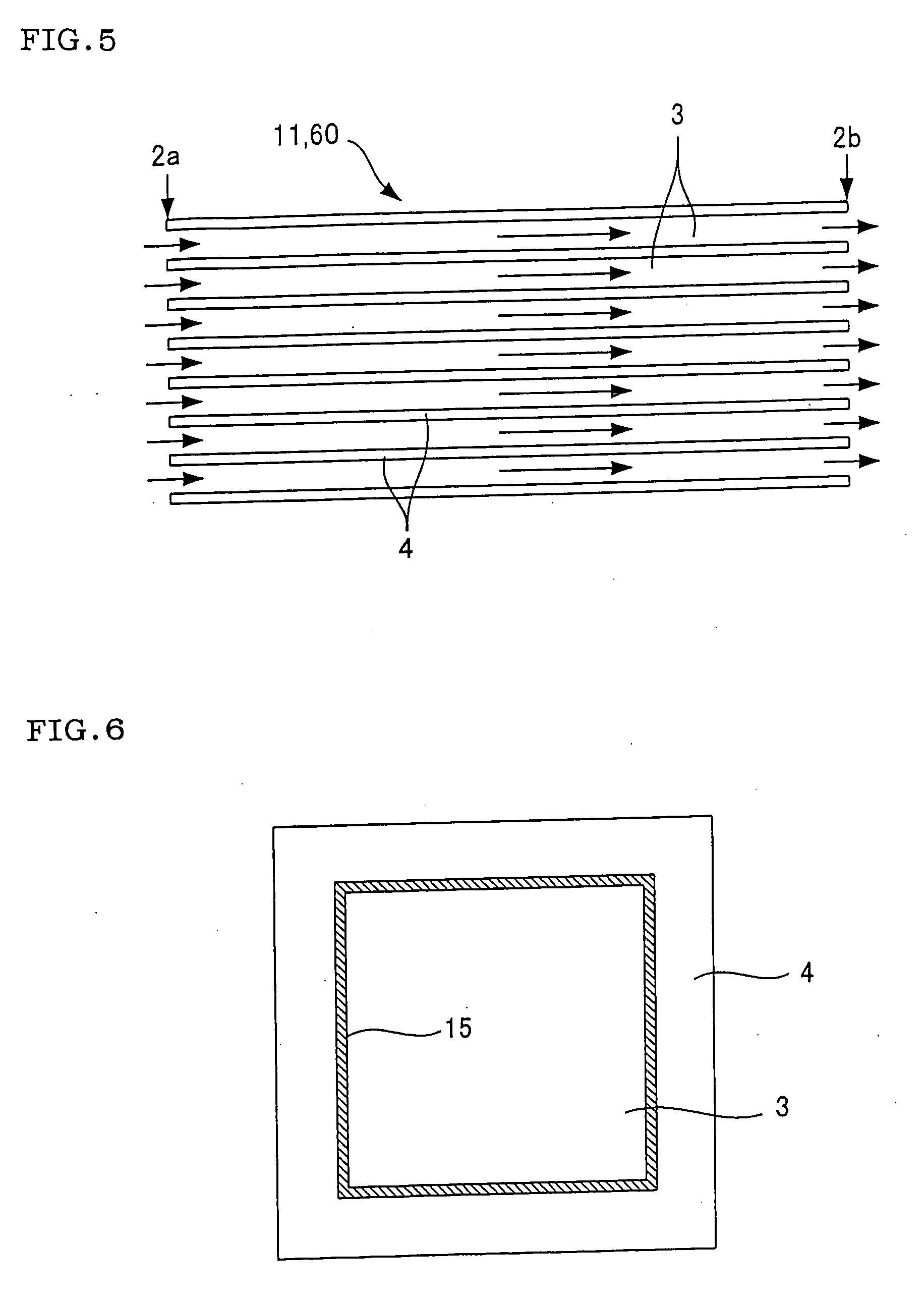Honeycomb structure and honeycomb catalytic body
a honeycomb and catalytic body technology, applied in the direction of metal/metal-oxide/metal-hydroxide catalysts, machines/engines, chemical/physical processes, etc., can solve the problems of high pressure loss, difficult mounting, and ininverse proportion of the square of the hydraulic diameter of the cell, so as to achieve excellent purification efficiency and reduce pressure loss. , the effect of excellent purification efficiency
- Summary
- Abstract
- Description
- Claims
- Application Information
AI Technical Summary
Benefits of technology
Problems solved by technology
Method used
Image
Examples
example
[0081] The present invention will hereinbelow be described in more detail on the basis of Examples. However, the present invention is by no means limited to these Examples.
[0082] [Average Image Maximum Distance]
[0083] Pore diameters were measured by image analysis, and the average image maximum distance was calculated. Concretely, a SEM photograph of a cross-section of a partition wall was observed for at least 20 viewing fields with respect to a viewing field of length×width=t×t in the case that the partition wall thickness was defined as “t”. Next, the maximum linear distance in a gap was measured within each of the viewing fields observed above, and the average value of the maximum linear distances measured with respect to all the viewing fields was determined as the “average image maximum distance”.
[0084] [Standard Deviation (σ) of Pore Diameter Distribution]
[0085] A pore diameter distribution was measured by the use of a mercury porosimeter (Trade name: Auto Pore III, type 94...
examples 1 to 24
, Comparative Examples 1, 2
[0103] To 100 parts by mass of a cordierite forming raw material prepared by combining some selected from talc, kaolin, calcined kaolin, alumina, calcium hydroxide, and silica at a predetermined ratio to have the chemical composition of 42 to 56% by mass of SiO2, 0 to 45% by mass of Al2O3, and 12 to 16% by mass of MgO, were added 12 to 25 parts by mass of graphite as a pore former and 5 to 15 parts by mass of a synthetic resin. To the mixture were further added an appropriate amount of a methyl cellulose and a surfactant. Then, water was further added to the mixture, and the mixture was kneaded to prepare clay. The clay was subjected to vacuum degassing and subsequently to extrusion forming to obtain honeycomb formed bodies. After the honeycomb formed bodies were dried, they were fired at the highest temperature of 1400 to 1430° C. to obtain honeycomb fired bodies. By plugging one of the end portions of each cell of the obtained honeycomb fired bodies to g...
example 25
[0105] A honeycomb structure having a pore structure of partition walls shown in Table 2, a diameter of 144 mm, and a length of 152 mm was manufactured in the same manner as in the above Examples 1 to 24 and Comparative Examples 1 and 2 except that a chemical composition of the cordierite forming material, a particle diameter of the pore former, an amount of the pore former added, and the like, are suitably adjusted. A percentage of the number of carbon particulates passing through the honeycomb structure is shown in Table 2.
PUM
| Property | Measurement | Unit |
|---|---|---|
| concentration | aaaaa | aaaaa |
| diameter | aaaaa | aaaaa |
| diameter | aaaaa | aaaaa |
Abstract
Description
Claims
Application Information
 Login to View More
Login to View More - R&D
- Intellectual Property
- Life Sciences
- Materials
- Tech Scout
- Unparalleled Data Quality
- Higher Quality Content
- 60% Fewer Hallucinations
Browse by: Latest US Patents, China's latest patents, Technical Efficacy Thesaurus, Application Domain, Technology Topic, Popular Technical Reports.
© 2025 PatSnap. All rights reserved.Legal|Privacy policy|Modern Slavery Act Transparency Statement|Sitemap|About US| Contact US: help@patsnap.com



